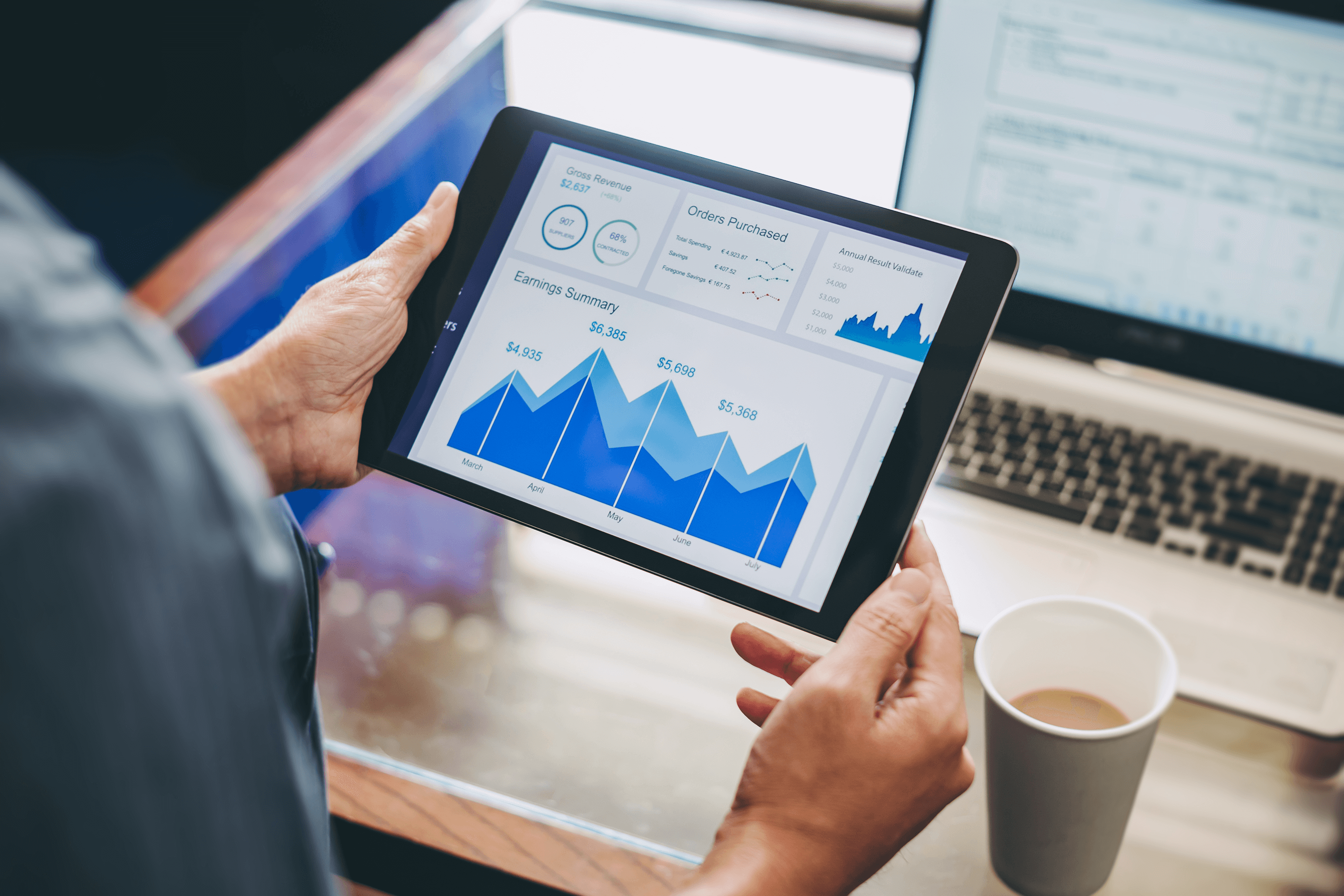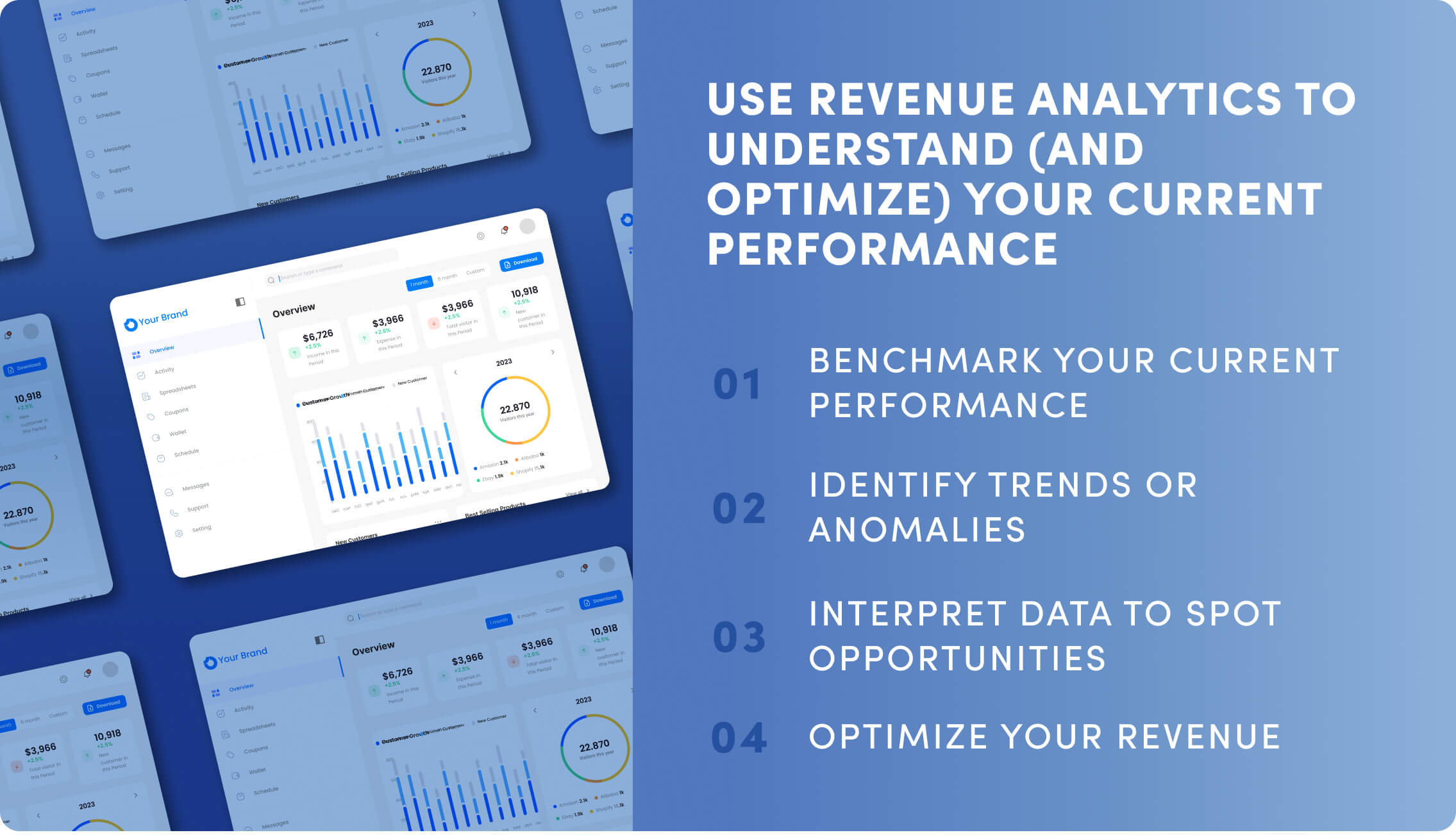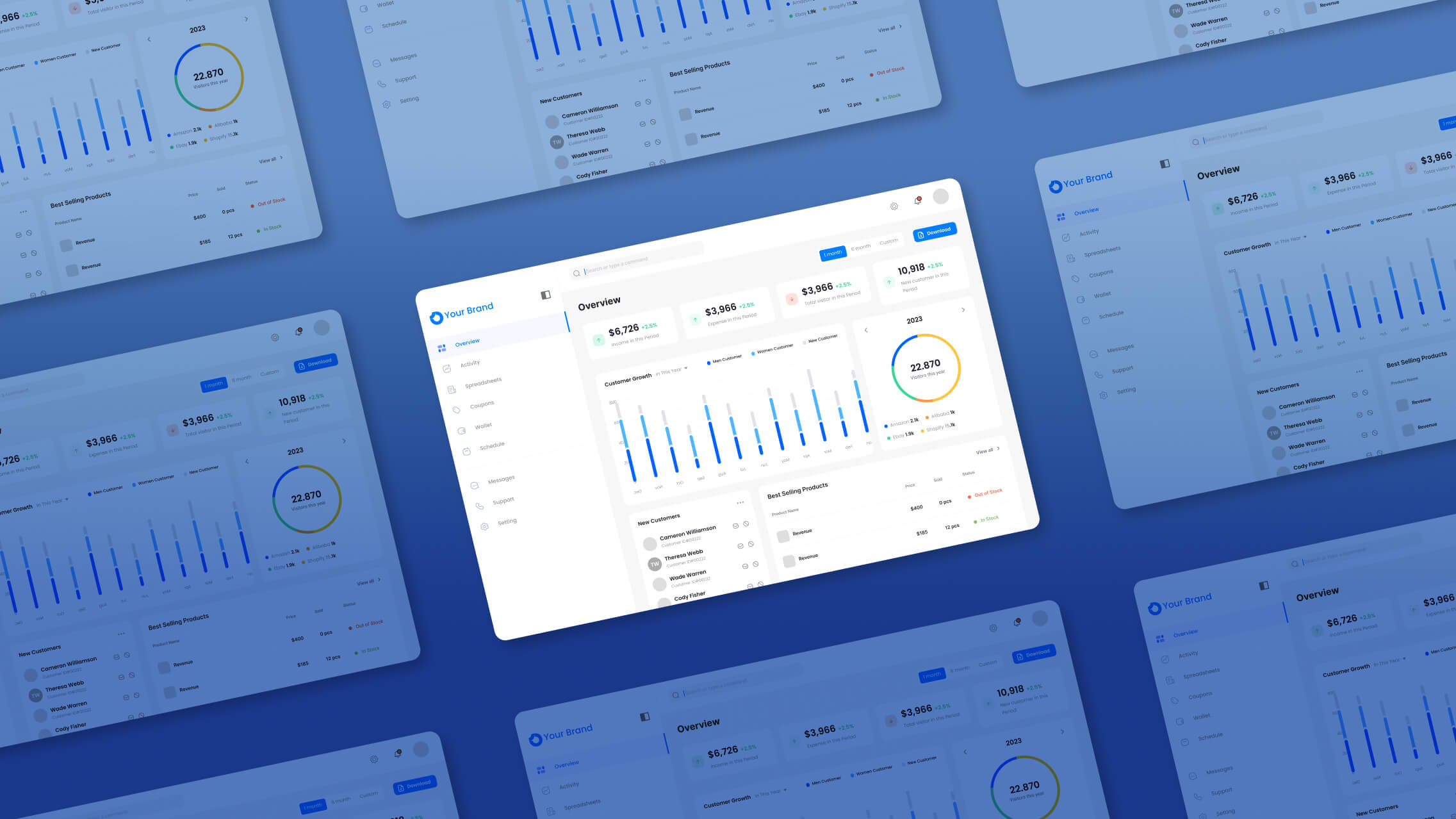- Revenue Analytics Unlocks Ecommerce Growth: Revenue analytics, collected through metrics like AOV, churn rate, and CLV, is the key to understanding how your ecommerce business is performing and uncovering areas for improvement.
- Spotting Trends and Opportunities: By analyzing data from various sources and comparing it to industry norms, you can identify trends and anomalies, helping you make informed decisions, optimize pricing, and design more effective marketing campaigns.
- Incremental Changes for Revenue Optimization: Rather than making abrupt changes, focus on the most significant outliers in your data, gradually implementing improvements that enhance your customers' experience and increase revenue, such as personalized product suggestions and data-informed pricing strategies.
Each click your shoppers make on your Shopify store is another clue to unraveling the big mystery of sales growth 🕵️♀️
Uncover the clues so you can unmask the culprit holding back your ecommerce store. You don’t even need your own Mystery Machine. All you need is revenue analytics.
By digging into your revenue analytics, you will understand how your customers engage with your store and what you can do to improve their experience and drive more revenue.

What Is Revenue Analytics?
Revenue analytics is the process of collecting and analyzing data about how much money your ecommerce platform is generating. This data allows you to drill into the details of how well your business is doing and what’s driving success.
Analyzing this performance data is the first step in revenue optimization. You have to know how your customers are interacting with your site before you can adjust pricing and marketing strategies effectively.
The metrics involved in your revenue analysis will vary based on the goals you have for your site. If you focus on upgrading non-paying users to a paid plan, you’ll want to pay attention to different metrics than if your goal is to increase the number of items per order.
But some metrics are useful regardless of your goal.
- Average Order Value (AOV): Your average order value is the average dollar amount of each order your customers place over a specific time frame. With this metric, you have a better idea of your profit margins on each order and where upsell opportunities exist.
- Churn rate: Your churn rate tells you how many of your customers don’t purchase again or resubscribe over a certain period of time. Knowing this number is the first step to understanding if you’re satisfying your customer’s needs – during and after the transaction.
- Customer Lifetime Value (CLV): Your customer lifetime value is the amount of revenue you can expect over the course of a customer's relationship with your business. Your CLV helps you determine benchmarks for your most valuable customers.
These revenue metrics show you how your business is doing right now and ways you can improve the long-term health of your ecommerce platform.
The Benefits of Revenue Analytics
Revenue analytics enable you to understand what’s working in your ecommerce store so you can scale the good parts and fix the bad.
They help you understand your revenue growth and optimize your revenue management. By looking at your metrics, you see how people are buying from you and are able to identify trends.
Perhaps you find that your most loyal customers all have a specific product in common. Maybe customers who start using their subscription within the first week are more likely to renew. Using this information, you can identify opportunities for new revenue, such as bundles centered around that specific product or special offers that entice users to start their subscription immediately.
Reviewing your revenue analytics on a regular basis will also give you a better understanding of your customers’ behavior, including any unusual seasonality of products. You might find a specific product you sell is popular around Father’s Day or that your service has a market around back-to-school. This information will help you plan new marketing campaigns and offer targeted discounts.
With these new insights, you can create more accurate forecasting. Knowing your churn benchmarks and causes, for example, will help you better plan for events you know make people unsubscribe, such as price increases. With better forecasting, you will make more strategic decisions for the growth of your business.
Use Revenue Analytics to Understand Your Current Performance — Then Optimize

Use analytics to optimize for revenue in four steps: collect your data, identify trends, spot opportunities, and optimize for revenue.
1. Collect Data to Benchmark Your Current Performance
The metrics you focus on should align with your most important KPIs. Make sure you are pulling the data that will help your decision-making so you can reach those KPIs. When collecting data, focus on what you need to build segments and forecast your sales, such as:
- Demographic data: Collect data such as age, gender, and education level as part of a loyalty program or profile. This will help you launch promotions tailored to specific markets and personas.
- Geographic data: You’ll want to know where your customers are to help you identify localized trends. A customer in Atlanta, Georgia, will likely have different preferences than a customer in New York.
- Buying history: Make sure you have a way to collate the buying history of your customers. This information is key to identifying items that build loyalty and potential upsell opportunities.
- External industry data: It’s not just internal data you should keep an eye on. Track industry trends so you can evaluate your sales data in a broader context. Couple this with your historical sales data to understand any correlations that you can use in your forecasting.
Much of this data will come from your Shopify reports, but you should also set up other website analytics tools such as Google Analytics. More data means you can analyze it all in a more meaningful way.
2. Analyze Data to Identify Trends or Anomalies
This step shows you the clues that will help you optimize your revenue.
Know which reports are important to your revenue goals and check them regularly for real-time understanding. Then, refine your reports further to make sure you are getting the information you need to make meaningful changes. Once you have that information, create cohorts so you can drill into specific time frames. This allows you to compare data before and after a marketing campaign or see what high-value customers do that others don’t.
The native reporting in your ecommerce platforms is typically intuitive, but don’t be afraid to pull information into spreadsheets or an analytics tool for modeling. It’s often helpful to compare different metrics in a way your Shopify reports don’t do easily.
Be sure to test your information against other sources to make sure the data is accurate. Unique visitors and sales typically move in tandem, so you should see bumps in both after big marketing campaign launches.
3. Interpret Data to Spot Opportunities
Once you have the data flowing and you understand the reports, you should start making predictions. Put the clues together to see the big picture.
Create insights based on the information you get, such as which of your personas has the lowest AOV. They might be good for upsells or discounts. Use your reports to identify high-performing channels, such as specific LinkedIn campaigns or product webinars.
Compare the data you generated to the industry norms. Is one metric significantly higher or lower than your competitors? If so, start looking at related metrics to determine why you're seeing an outlier. Once you have some ideas on what your revenue analytics are telling you, begin making hypotheses you can test.
4. Make Meaningful Changes to Optimize Your Revenue
You have the data. You've analyzed the results and understood what they're telling you. Now it’s time to use the information you’ve collected to make informed decisions about your ecommerce and pricing strategy.
You shouldn't try to make every change at once. Start slow and focus on the most important changes first. You don't want to disrupt your business by completely overhauling everything and potentially upsetting your customers.
Look at which changes will bring the most revenue. What's the biggest outlier compared to your industry? If it's something good, focus more of your efforts on replicating that success with other areas of your business. If it's bad, brainstorm some ideas and do some research to fix the problem. Once that's stabilized, move on to the next outlier and repeat the process.
Here are examples of what you could do based on your data analytics and your business goals:
- Understand your most valuable personas to create better-segmented marketing campaigns. You’ll be able to include more personalized suggestions, especially when paired with artificial intelligence. You'll also know how to encourage other personas to behave like your high-value customers.
- Determine the profitability of each product to improve your inventory and price optimization. A data-informed pricing strategy includes discontinuing low-profit products and expanding in areas your customers want — and that offer a higher margin for you.
- Increase AOV based on user behavior and preferences. Revant Optics used data to understand product compatibility and saw an immediate bump in cross-sells.
- Use revenue analytics to recognize and optimize channels that bring in your best customers. With these attribution metrics, you will know exactly what promotions, campaigns, and affiliate relationships are driving your more valuable customers, so you can do more of that and less of what is not working.
- Build loyalty with your customers by improving product selection and communication. Once you know which products keep customers coming back, use automation to create bundles based on complementary products and items that are frequently purchased together.
Take Your Store to the Next Level With Commerce AI
You have your data. You've made great changes, and your business is thriving. What now?
It's time to make even better use of all that data analysis. Rebuy helps you optimize your revenue by creating a personalized shopping experience for your customers. From Smart Links™ with targeted promotions to dynamic bundles that maximize your inventory, you can use Rebuy to enhance your customer's experience and improve your revenue strategy.
As you get your revenue analytics machine humming, demo Rebuy for more ways to optimize your ecommerce store.
•••
Try Rebuy free and see why the world’s top brands use Rebuy to accelerate sales growth.
Interested in partnering with Rebuy? Let's do it.
To keep up with the latest trends, platform updates, and more, follow us on LinkedIn.
